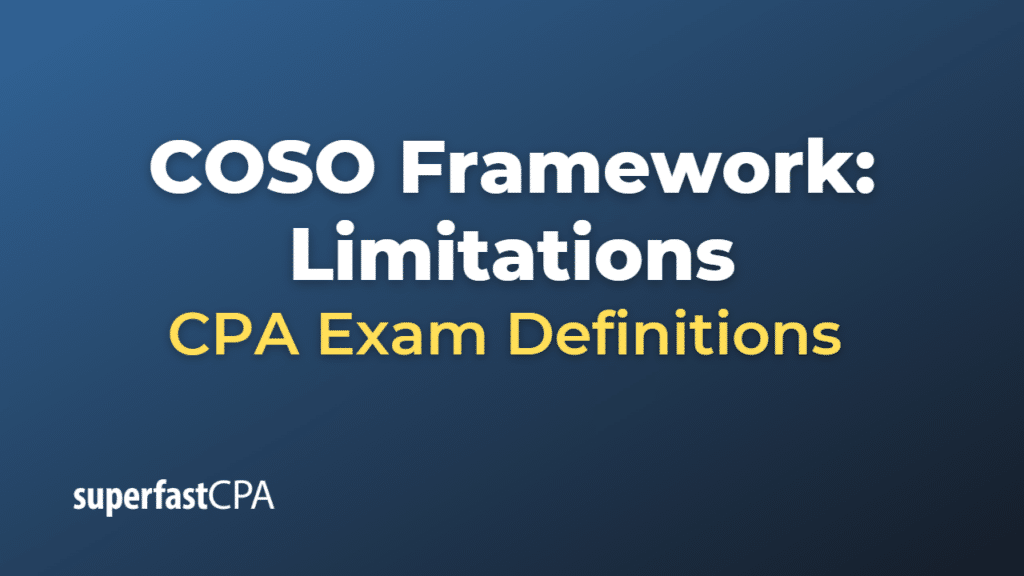COSO Framework: Limitations
While the COSO Internal Control Framework provides a comprehensive and flexible approach to designing, implementing, and evaluating internal control systems, it has certain limitations. These limitations stem from various factors, including human judgment, resource constraints, and the inherent nature of internal controls. Some of the limitations of the COSO framework include:
- Human error: Internal control systems rely on human judgment and decision-making, which can be prone to errors, biases, or mistakes. Even well-designed controls can fail if employees make mistakes or misinterpret information, whether unintentionally or due to a lack of training or expertise.
- Collusion and fraud: The effectiveness of internal controls can be undermined by collusion among employees or management, which may bypass the controls in place. Additionally, the framework cannot prevent all instances of fraud, as determined individuals with sufficient knowledge and authority may still find ways to circumvent the system.
- Management override: Management may have the ability to override established controls, which can lead to control failures and increased risk. While the COSO framework emphasizes the importance of a strong control environment and governance structure, there is still a risk that management could override controls for personal gain or other reasons.
- Resource constraints: Organizations may face resource constraints, such as limited budgets, staffing, or time, which can impact the design, implementation, and monitoring of internal controls. The effectiveness of the control system may be compromised if sufficient resources are not allocated to support the ongoing maintenance and improvement of internal controls.
- Changing conditions: The COSO framework acknowledges that internal control systems must be adaptable to changes in the internal and external environment. However, there may be delays in identifying and responding to new risks, changes in the organization, or shifts in the regulatory landscape, which can temporarily reduce the effectiveness of the control system.
- Cost-benefit considerations: Designing and implementing a comprehensive internal control system requires organizations to balance the costs and benefits associated with the controls. Some controls may be too costly or complex to implement, leading to a trade-off between the level of control and the cost-effectiveness of the system.
It is essential for organizations to recognize these limitations and continually evaluate and improve their internal control systems to minimize risks and achieve their objectives. While the COSO framework provides valuable guidance for designing and maintaining effective internal controls, it is not a guarantee against control failures or business risks.













